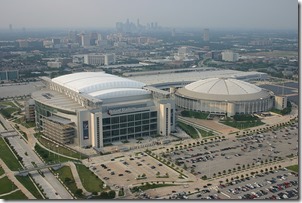 Astros legend Jeff Bagwell was finally elected to the Baseball Hall of Fame, something that I pointed out should have been a no-brainer over a decade ago.
Astros legend Jeff Bagwell was finally elected to the Baseball Hall of Fame, something that I pointed out should have been a no-brainer over a decade ago.
But Hall of Fame voting is not always rational or even well-informed, so Bags’ election is one of those things that is definitely better late than never.
Bagwell endeared himself to Houstonians partly because he was similar to many of us who moved to Houston to start our careers and then ended up making it our home.
As with his long-time teammate and fellow Hall of Famer Craig Biggio, Bags was from the northeast and came to Houston for the first time as a wide-eyed 23-year old in 1991.
Over the years, Bagwell and Biggio embraced Houston and made it their home. Houstonians responded by making Bagwell and Biggio the icons of the Astros franchise.
My first connection with Bagwell was during his remarkable Rookie of the Year season in 1991 when I got to know his father Bob, who sat in the row in front of my Astrodome seats about 20 rows behind the Astros dugout.
However, after that season, I got an opportunity to know Bagwell better. A friend of mine asked me to host a golf game for him, Bagwell, and former Astro Norm Miller at Lochinvar Golf Club, which was my golf club at the time.
So, on a warm November day in 1991, Bagwell, Miller, my friend, and I got together and played a round of golf while walking around Lochinvar. It was Bagwell’s first of many rounds that he would eventually play at Lochinvar, where he later became a member.
Golf is a wonderful form of recreation primarily because of its social nature — you can get to know someone reasonably well talking with them while walking around a beautiful pasture for four hours.
That certainly was the case with Bagwell, who is friendly and easy-going. And Norm Miller — who is one of the funniest professional athletes that I’ve ever met — kept the group loose throughout the round as he shared many witty anecdotes from his ten-year Major League career.
After we had gotten to know each other over a couple of hours on the course, Bags asked me how I became interested in baseball. I replied that I’d been a decent catcher as a youth ballplayer in Iowa, but gravitated toward football in high school because I didn’t much like the baseball coach.
In my senior year of high school, I swallowed my dislike of the baseball coach, played that final season of high school baseball, and performed well enough to generate an offer from the University of Iowa baseball coach to walk-on and compete for a spot on Iowa’s baseball team.
But at the time, my folks and family were in the process of pulling up our deep Iowa roots and moving to Houston. So, I passed on the walk-on offer and moved with my family to Texas.
My decision was also helped by several games of summer league ball that I played that year with Jim Sundberg, the former University of Iowa catcher who went on to have a fine 16-year MLB career, primarily with the Rangers and the Royals.
Sundberg was so much better than me (as well as every other player in the summer league) that I realized quickly that a future in baseball was not in the cards for me.
After explaining all that, Bagwell asked me: “So, why didn’t you walk-on at Iowa?”
You see, ballplayers such as Bagwell and Miller love to play baseball so much that it is pretty much unimaginable to them that someone wouldn’t jump at any opportunity to continue playing the game. Miller re-emphasized that point during the round when he told us a hilarious story premised on the question: “Do you know what I would do to be able to play baseball for $100,000 a year?”
At any rate, I replied to Bagwell’s question: “I was an O.K. defensive catcher. But to be honest, I was a lousy hitter. I couldn’t hit a decent breaking pitch, much less a good one.”
Bagwell smiled with a twinkle in his eye and observed:
“That shouldn’t have stopped you. No one can really hit a decent breaking pitch.”
Congratulations on making the Hall of Fame, Bags. You hit more than a few decent breaking pitches in doing so.



